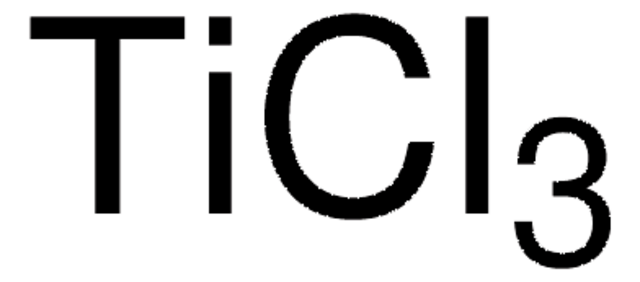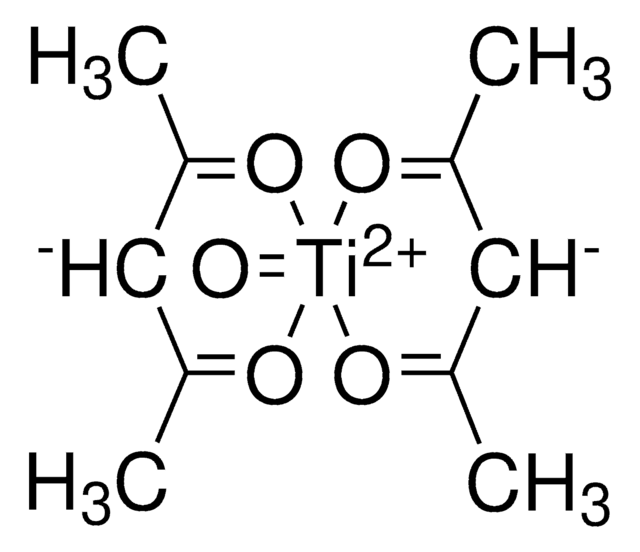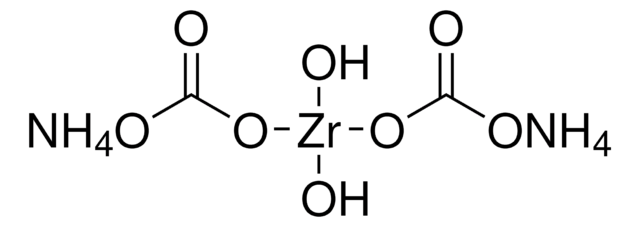If this product has an expiration or retest date, it will be shown on the Certificate of Analysis (COA, CofA). If there is no retest or expiration date listed on the product's COA, we do not have suitable stability data to determine a shelf life. For these products, the only date on the COA will be the release date; a retest, expiration, or use-by-date will not be displayed.
For all products, we recommend handling per defined conditions as printed in our product literature and website product descriptions. We recommend that products should be routinely inspected by customers to ensure they perform as expected.
For products without retest or expiration dates, our standard warranty of 1 year from the date of shipment is applicable.
For more information, please refer to the Product Dating Information document: https://www.sigmaaldrich.com/deepweb/assets/sigmaaldrich/marketing/global/documents/449/386/product-dating-information-mk.pdf
388165
Titanium(IV) bis(ammonium lactato)dihydroxide solution
50 wt. % in H2O
Synonym(s):
Dihydroxybis(ammonium lactato)titanium solution
About This Item
Recommended Products
vapor pressure
0.51 psi ( 20 °C)
3.19 psi ( 55 °C)
form
liquid
reaction suitability
core: titanium
reagent type: catalyst
concentration
50 wt. % in H2O
refractive index
n20/D 1.438
density
1.222 g/mL at 25 °C
SMILES string
N.N.CC(O[Ti](O)(O)OC(C)C(O)=O)C(O)=O
InChI
1S/2C3H5O3.2H3N.2H2O.Ti/c2*1-2(4)3(5)6;;;;;/h2*2H,1H3,(H,5,6);2*1H3;2*1H2;/q2*-1;;;;;+4/p-2
InChI key
XRASGLNHKOPXQL-UHFFFAOYSA-L
Application
- A water-soluble Ti precursor for the synthesis of TiO2/WO3 nanofibers applicable in photocatalysis.[1]
- A reactant to synthesize a complex with pyrocatechol violet applicable as a colorimetric HF sensing dye.[2][3]
- A Ti precursor to synthesize mesoporous silica loaded with titania nanoparticles for photocatalytic applications.[4]
Signal Word
Warning
Hazard Statements
Precautionary Statements
Hazard Classifications
Flam. Liq. 3
Storage Class Code
3 - Flammable liquids
WGK
WGK 3
Flash Point(F)
81.9 °F
Flash Point(C)
27.7 °C
Choose from one of the most recent versions:
Already Own This Product?
Find documentation for the products that you have recently purchased in the Document Library.
Customers Also Viewed
-
How can I determine the shelf life / expiration / retest date of this product?
1 answer-
Helpful?
-
-
How is shipping temperature determined? And how is it related to the product storage temperature?
1 answer-
Products may be shipped at a different temperature than the recommended long-term storage temperature. If the product quality is sensitive to short-term exposure to conditions other than the recommended long-term storage, it will be shipped on wet or dry-ice. If the product quality is NOT affected by short-term exposure to conditions other than the recommended long-term storage, it will be shipped at ambient temperature. As shipping routes are configured for minimum transit times, shipping at ambient temperature helps control shipping costs for our customers. For more information, please refer to the Storage and Transport Conditions document: https://www.sigmaaldrich.com/deepweb/assets/sigmaaldrich/marketing/global/documents/316/622/storage-transport-conditions-mk.pdf
Helpful?
-
Active Filters
Our team of scientists has experience in all areas of research including Life Science, Material Science, Chemical Synthesis, Chromatography, Analytical and many others.
Contact Technical Service












